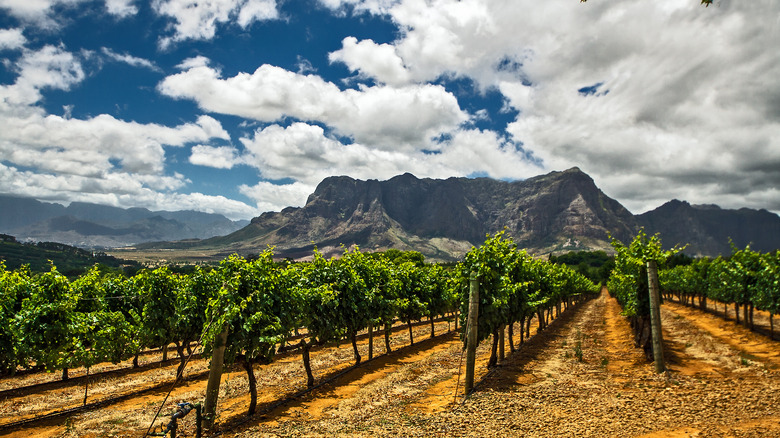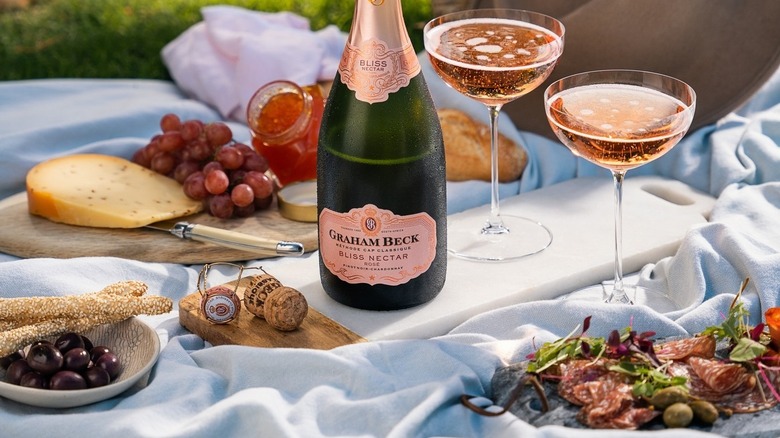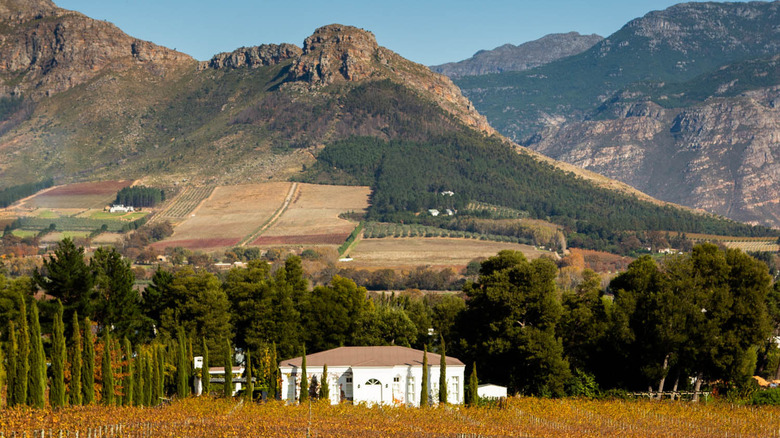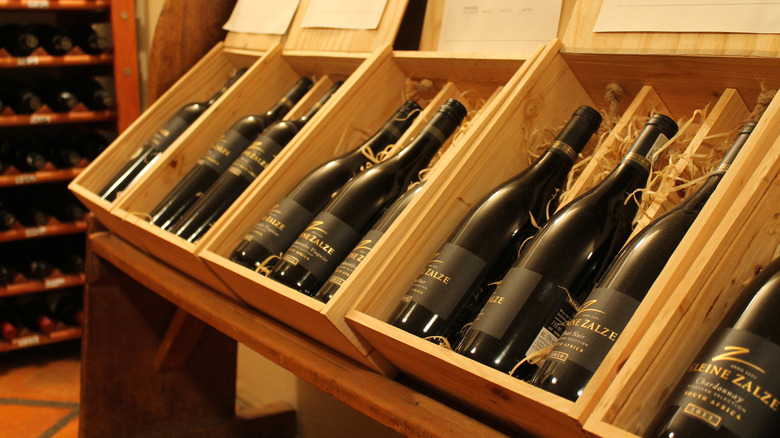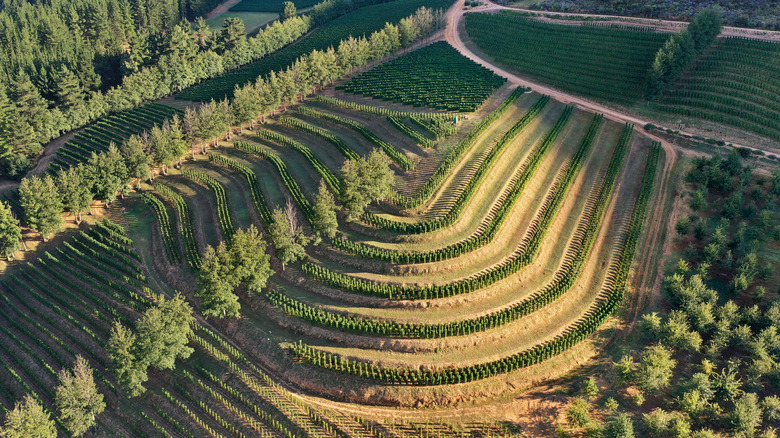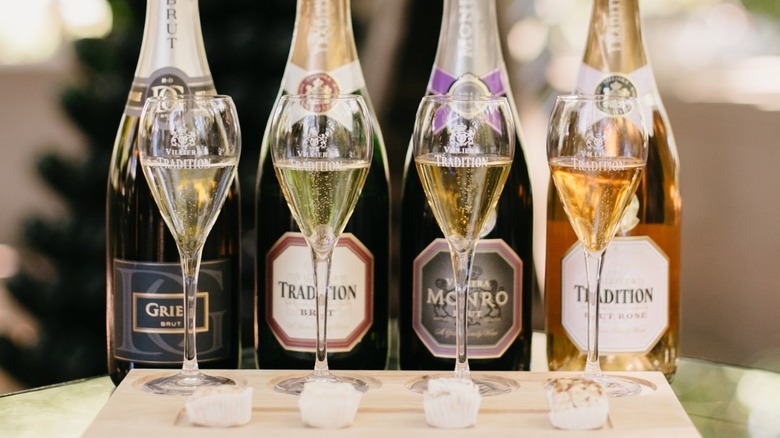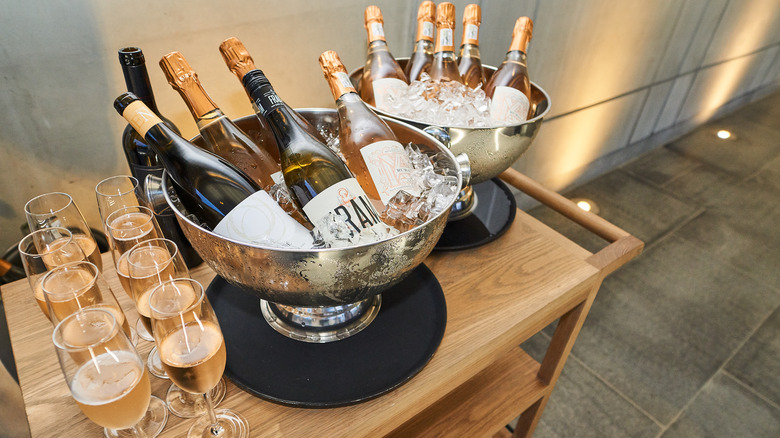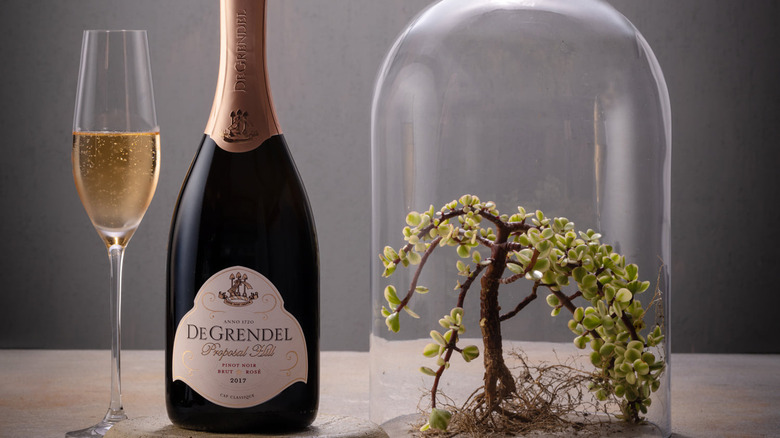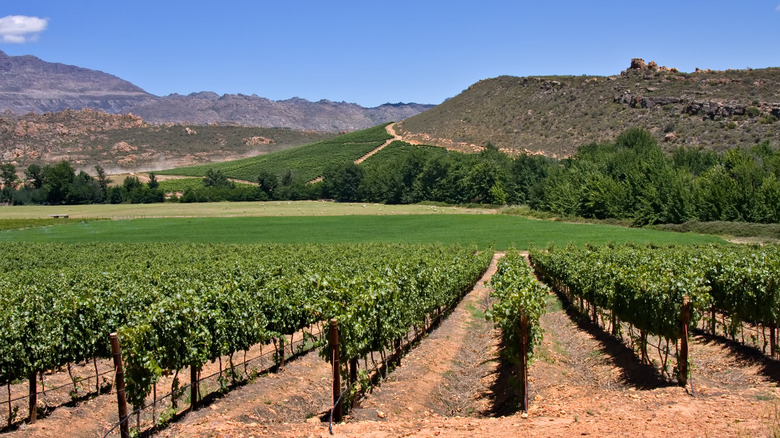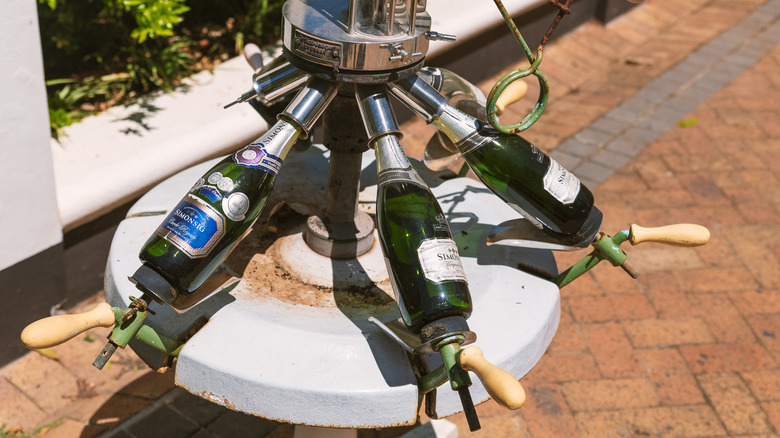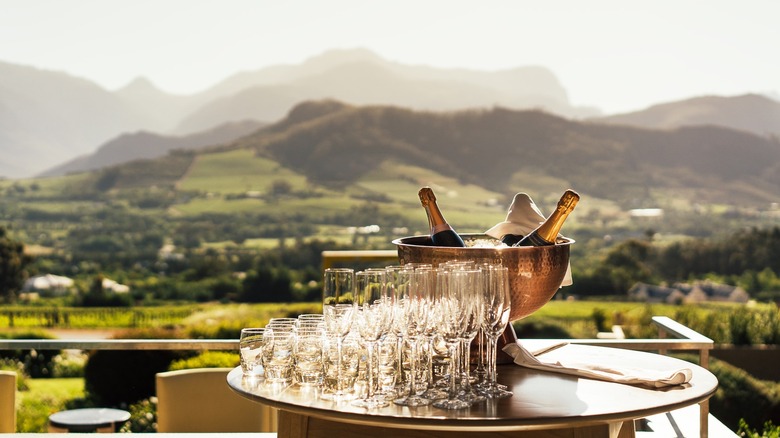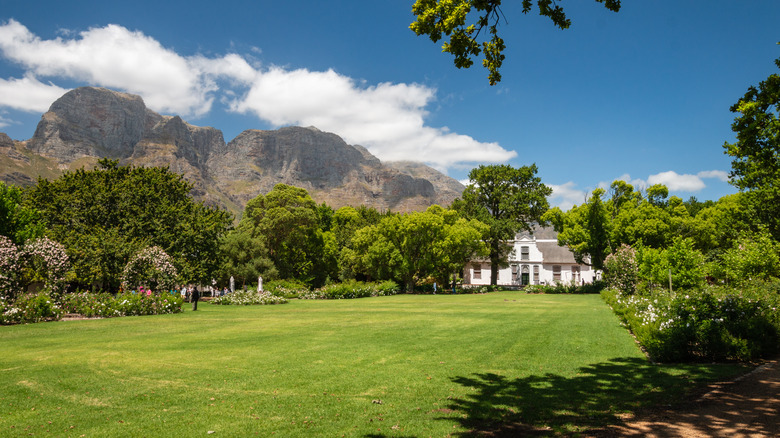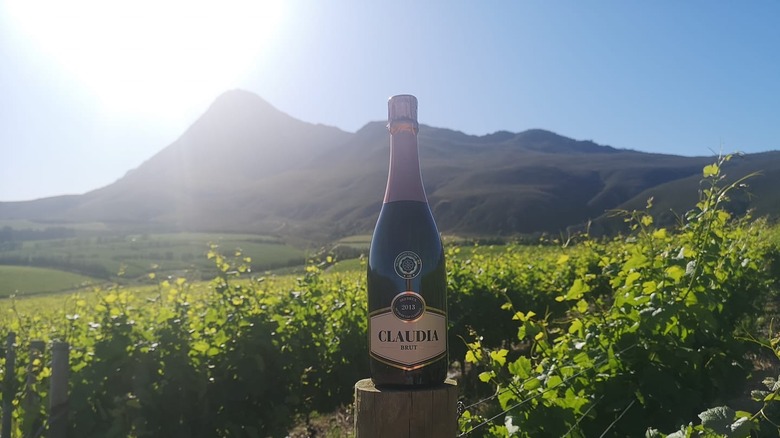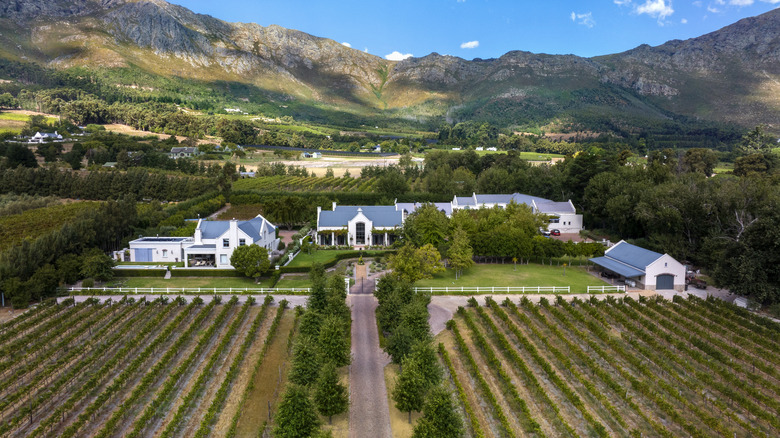13 Best South African Sparkling Wines
Do you have Champagne tastes on a cava budget? We got you. Meet Méthode Cap Classique, or MCC for short, South Africa's answer. Made in the "Méthode Champenoise," literally meaning made in the same method as Champagne, MCC is the best of both worlds. The quality is on par with Champagne, but the price is more in line with prosecco or cava. The same grapes (chardonnay, pinot noir, and pinot meunier) used to make Champagne are used in MCC, with the addition of chenin blanc, which is a widely planted grape in South Africa. Minimum aging on the lees has recently been changed from nine months to 12 months, which is the same as Champagne, although many producers age for longer, even up to 60 months.
Currently, it is not as easy to find MCCs in many wine shops as it is to find prosecco, Champagne, or cava, but producers and enthusiasts are looking to change that. The Cap Classique Producers Association in South Africa was established in 1992. 2021 marked 50 years since the first Cap Classique was made by Simonsig. Cap Classique Day is a more contemporary holiday to celebrate this prized bevvie and it occurs every year on the 1st of September, notes Getaway. Ask your local wine shop to stock up on your new favorite fizz.
Graham Beck
In 1983, entrepreneur Graham Beck bought the farm that is now one of the most celebrated MCC houses in South Africa. The farm is situated in Robertson, which is a wine-producing area in the Breede River Valley region of the Western Cape. They planted new grapes and, in 1990, appointed Peter Ferreira as winemaker. Ferreira is a leading figure in the MCC (Methode Cape Classique) association, pushing the category forward. As the winery grew and the fascination with MCC grew as well, Beck invested in more land for vineyards in the Cape. Graham Beck is a sustainable winery that works to minimize the effects of climate change and is currently undergoing a movement to reintroduce native flora and fauna. If you visit, you can sip wine with the zebras and baboons!
1994 was an important year for the winery, dating the first export of Graham Beck wines and also the year of Nelson Mandela's inauguration. The wine Mandela celebrated with was Graham Beck Brut. Fourteen years later, Barack Obama also celebrated his presidential win with Graham Beck Brut. Today, it is easy to find Graham Beck MCC on shelves and online. The range includes very dry styles (brut), rosé, vintage, and sweet MCC called "Nectar."
Le Lude
Nic and Freda Barrow have been making a fine Cap Classique called Le Lude in the Franschhoek Valley of South Africa's Western Cape. This wine region is where French Huguenots, fleeing persecution for their religious beliefs, landed in the Cape and began making wines in the late 1600s. Le Lude grows classic Champagne varieties chardonnay, pinot noir, and pinot meunier to make the Cap Classique. The first vintage of Le Lude MCC took place in 2015. According to Wineland, Le Lude was the first cellar to produce an Agrafe (Tirage Liège) Cap Classique. Agrafe is a method of using a cork held in place with a metal staple called an agraffe in preparation for prise de mousse (second fermentation). Why you might ask? It is said to increase texture and creaminess while creating a longer-lasting mousse (bubbles) when the juice has contact with natural cork while it ages on the lees. Le Lude offers a range of brut, rosé, and vintage MCC.
Kleine Zalze
Situated in the heart of Cape Winelands in Stellenbosch, Kleine Zalze is a part wine farm, part luxury lodge, part gold course, part upscale dining, and all amazing. Its wine portfolio consists of both still wines (red and white) and Cap Classique (brut white and rosé). Kleine Zalze has raked in awards from prestigious organizations like the International Wine and Spirits Competition, Concours Mondial de Bruxelles, and the Michelangelo International Wine & Spirits Awards, with the MCC winning many.
While visiting the vineyards for a tasting and maybe a round of golf sounds fantastic, a trip to South Africa may not be in the cards. Thankfully, in 2022, Kleine Zalze was partially acquired by Advini South Africa. Therefore, while they have had a considerable following in South Africa, the UK, Sweden, the Netherlands, and Germany for many years, the United States and other counties can soon expect to have access to these lovely wines.
Anthonij Rupert Wyne
Anthonij Rupert Wyne Farm is home to six different South African wine brands. It is located on the L'Ormarins farm in Franschhoek, for which its Methodé Cap Classique is named. The L'Ormarins line is a celebrated selection of MCCs made in the Old World style. The land on which the vines grow dates back to 1694 when it was occupied by French Huguenot Jean Roi. He named it after his hometown Lourmarin in the French Provence. He planted orchards and vines, knowing they would be fruitful due to the fertile soils and range of growing areas that span the lower-lying valleys and higher-up slopes of the Groot Drakenstein mountains.
Initially owned by the late Anthonij Rupert, who passed away in 2001, the farm was taken over by his brother Johann Rupert in 2003. We can thank Johann Rupert for these delicious sparklers as he constructed the state-of-the-art winemaking facility on the estate.
Villiera
The Villiera vineyards have been run by the Grier family since 1983 and produced their first Cap Classique in 1984. Situated in Stellenbosch, the land is a marvel of local flora and fauna. In addition to wine tasting, visitors can explore the Wildlife Sanctuary, which is part of The Cape Garden Centre and Wild Clover Farm. Guests can book two-hour game drives to experience the dams and marsh areas which attract a wide variety of birdlife, over 100,000 indigenous trees, and a plethora of mammals, including antelope, giraffe, wildebeest, and zebra. Dedicated stewards of the land, Villiera is IPW certified (Integrated Production of Wine is a voluntary environmental sustainability program), and all Villiera wines are vegan-friendly.
The current portfolio includes Tradition Brut, Tradition Rosé Brut, Starlight (low alcohol), Monro Brut (Vintage Prestige Cuvee), and Villiera Brut Natural (additive-free). Typical Champagne grapes are used, but interestingly, the Rosé Brut also blends in pinotage, giving it some oomph.
Steenberg
Located in Constantia Valley, about 30 minutes from Cape Town, is the Cape's first farm — Steenberg. Steenberg Farm was established in 1682 and produces a range of Cap Classique and other styles. The cool climate of Constantia Valley is conducive to the Champagne grapes used in Cap Classique. The area offers a mild temperature, cool breezes blowing in from False Bay, reliable winter rainfall, and good exposure to the sun. Their line consists of a straight-chardonnay MCC, single varietal Pinot Noir MCC, and Lady R, which is a vintage blend of chardonnay and pinot noir. While not considered an MCC, they also produce a sparkling sauvignon blanc, which grows beautifully in this area. MCC legend Graham Beck has been the owner since 2005.
Besides the world-class bubbly, Steenberg Farm has a 5-star hotel and spa, an 18-hole golf course, and two restaurants, all flanked by imposing mountains and peaks. The tasting room has a modern look and chic vibe.
De Grendel
The stunning wines of De Grendel are only eclipsed by the setting in which they are made — sitting atop the fynbos-covered slopes of the Tygerberg Hills overlooking Table Mountain and the city of Cape Town. Fynbos is natural shrubland that coats the hills and gives a fantastic savory aroma to the region. De Grendel has two vineyards — Tygerberg and Witzenberg. The cooler climate of Witzenberg is where chardonnay and pinot noir grow for use in its Cap Classique. As a result, the Proposal Hill Cap Classique Brut Rosé is made from 100% pinot noir, and its Cap Classique Brut is a chardonnay and pinot noir blend.
It's not only focused on producing champion wines but on doing so sustainably and kindly to the earth. In the vineyard, there is minimal spraying, utilization of solar power, and reliance on natural predators to scare away birds interested in juicy grapes. De Grendel is also active in protecting the endangered renosterveld vegetation that grows there.
Cederberg
Cederberg Wines is one of the most accessible brands to find in the U.S., but consumers might need to put in a special request for its MCC. Its tagline is "Wines With Altitude," and for a good reason — it is located at the foot of Sneeuberg Mountain, one of the highest peaks in the Western Cape at 6,646 feet above sea level. Cederberg Wines lays claim to having the highest vineyards in the Western Cape at between 3,116 and 3,608 feet above sea level. The altitude lends itself well to growing cool-climate grapes chardonnay and pinot noir used in MCC. Mostly known for its still wines, Cederberg boasts a chardonnay-based Blanc de Blanc Cap Classique that has raked in awards and accolades.
Cederberg farms sustainably and uses little to no chemical intervention. The farm also forms part of the Greater Cederberg Biodiversity Corridor (GCBC) between the West Coast and the Tankwa Karoo. Being centrally located in the wilderness area, visitors can take advantage of hiking, rock climbing, and nature peeping pre-tasting. The option to camp out or rent a cottage is there if you can't bring yourself to leave right away!
Simonsig
The first wine farm in South Africa to make a Champagne-method wine was Simonsig, located in Stellenbosch, in 1971 with the world-renowned Kaapse Vonkel. 'Vonkel' is an Afrikaans word that translates to English as 'sparkle'. Today, it makes numerous Vonkels, or a "Honkel of Vonkels," if you are feeling Dr. Suess-ey. The Kaapse Vonkel Satin Nectar is a demi-sec (slightly sweet) version, and it also comes in rosé. The classic brut style is still a celebrated style, and that comes in a rosé as well. However, the Cuvée Royale is the pièce de résistance, raking in awards from the most prestigious competitions.
Simonsig is named for the dramatic views of Simonsberg Mountain that are available at the estate. Visitors love sitting nestled under the trees while sipping on their bubbly and noshing on some cheese. Maybe you will spot some wild furry friends, as Simonsig works with the Biodiversity and Wine Initiative, which has helped to bring back local flora and fauna to the estate that had dwindled, such as the Cape Fox and Cape Leopards.
Haute Cabrière
When we say Haute Cabrière is dedicated to fine bubbly wine, we are not joking. It literally sells a saber along with its wine range online. Established in the Franschhoek Valley in 1694 by French Huguenot Pierre Jourdan, Haute Cabrière named their Cap Classique line after Jourdan. Naming a brand or cuvée after the original landowner is customary in the Champagne region. It is an homage to South Africa's 'French Corner,' Franschhoek, home to many wineries initially planted by French Huguenots. The line includes a pinot noir-based rosé MCC, a Blanc de Blanc, Brut, and Belle Nectar Demi-sec (slightly sweet).
The estate was officially established by the von Arnim family in the early 1980s, with Achim von Arnim pioneering the Cap Classique style along with others like Graham Beck and Simonsig. Today, Takuan von Arnim heads up the Cellar Team. So if you visit, you might catch him sabering a bottle for guests to enjoy!
Boschendal
Boschendal is one of the oldest wine estates in South Africa and is located between Franschhoek and Stellenbosch in the Western Cape. It has been producing fine Cap Classique for more than 40 years. The first vintage was made in 1982 by Haute Cabrière founder Achim von Arnim. The current Cap Classique line includes a Brut, Brut Rosé, Grand Cuvée Brut, Jean De Long Cuvée Prestige, and the Luxe Nectar, which is a demi-sec. The Jean De Long Cuvée Prestige was named for, you guessed it, a French Huguenot refugee. Jean De Long originally planted the Boschendal wine farm vines in Franschhoek's Drakenstein valley in the late 1680s. Since then, Boschendal Méthode Cap Classique Brut has been named one of the top 10 sparkling wines in the international Effervecents du Monde awards.
Visitors can enjoy the tasting experience in the tasting room or picnic-style on the grounds. In addition, the opportunity to stay in its luxury mountain villas or cottages is available. Plenty of fynbos-filled hiking trails, garden walks, and even a treetop adventure for kids surround each retreat. The tasting room, farm shop, and restaurant are close by as well.
Domaine Des Dieux
Tucked into the foothills of the highest mountain peak in the Hemel-en-Aarde Ridge sits Domaine Des Dieux. The altitude offers cool temperatures and maritime breezes, which are perfect for chardonnay and pinot noir for Cap Classique. The farm, with vineyards on the slopes of Babylon's Toren mountain, was purchased in 2002 by Sharon Parnell and Peter Clarke. Domaine Des Dieux is the first MCC producer in this region. Parnell and Clarke swiftly realized that the region (meaning where heaven meets earth) is optimal for Cap Classique production. The flagships of the winery are the two MCCs — Rose of Sharon Brut Rose MCC and Claudia Brut MCC.
While not certified organic, it has replaced synthetic fertilizers, pesticides, herbicides, and unnatural farming practices with sustainable and regenerative farming. Visitors can expect picturesque views, personal tastings inside or outside on the patio, light noshes, and the opportunity to try the 'art of sabrage' experience.
Colmant
In 2002, Jean-Philippe Colmant moved with his family from French-speaking Belgium to Franschhoek in the Western Cape. What is now Colmant, an estate dedicated entirely to Cap Classique, was part of the original La Motte farm granted to one of the French Huguenots back in 1694. It has a unique cellar explicitly built for the production and maturation of MCC that was built in 2005. Colmant gained much of his expertise from none other than Pieter Ferreira of Graham Beck, or "Mr. Bubbles" as he has come to be known.
Styles now produced are Brut Reserve, Blanc de Blanc, Delice Nectar Sec (a sweet style), Brut Rosé, Classique Brut, and the Absolu Dosage Zero, which is extra-dry. The Pinot noir and chardonnay used are either grown onsite in Franschhoek or from vineyards in Elgin and Stellenbosch. A visit to the farm offers sensational views and sips and the option to learn to saber your bubbly — which is a prevalent experience in South African tasting rooms!
